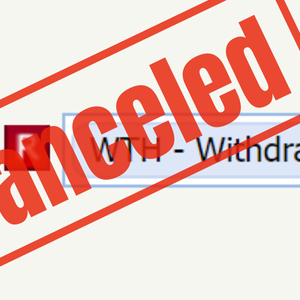CRAFT
Capital Region Area Floodplain Task-force
The communities listed below participates in the National Flood Insurance Program Community Rating System (NFIP CRS). Since 1968, FEMAs NFIP has been successful in assisting flood victims get back on their feet. As you may know, the NFIP provides federally backed flood insurance that encourages communities to enact Floodplain Management (FPM) regulations. In 1990 the NFIP implemented the CRS as a voluntary incentive program that recognizes community Floodplain Management (FPM) activities that exceed the minimum NFIP regulations.
We are all working toward the three goals of the CRS: flood loss reduction, facilitating an accurate insurance rating, and promoting awareness of flood hazards and insurance.
In terms of the NFIP CRS, one of the FPM activities undertaken by our communities, to promote awareness, involves “outreach”. The following information can help protect our citizens from another flood. We ask you please distribute this information to your clients as a public service. In doing so, we are together working to obtain and improve our current flood insurance discount.
Know your flood hazards and what you can do about it
You may be in a special flood hazard area. 42% of East Baton Rouge Parish has a potential of being flooded, 70% in Ascension Parish, and 75% in Livingston Parish. The major floods, that cause the most damage on the Amite and Comite Rivers and their tributaries occurred in 1967, 1977, 1979, 1980, 1983, 1989, 1990,1991,1995, 2001, 2005 and 2016. Find out if your property is in the regulated flood plain by calling your city’s floodplain management office.
Here are some thing you can do to protect your family and property from flooding:
Buy flood insurance. Even if you’re not in the mapped floodplain, you may be subject to local drainage flooding. In either case, flood insurance can be a good investment because homeowners’ insurance policies do not cover damage from flooding. To find out more about flood insurance contact your property insurance agent to see what policy is right for you. Don’t wait for the next flood , there is a 30 day waiting period for policy to take effect.
Do not walk or drive through flood waters. Currents are deceptive; six inches of moving water can knock you off your feet. Do not drive around barriers, as the road or bridges may be washed out. Preparing for an emergency can reduce the possibility of personal injury, loss of life and damage to property. Know your flood warnings signals, create an emergency plan, and prepare a disaster supply kit. To find out more information on flood warnings and emergency preparedness; contact your local Emergency Preparedness office.
Talk to us about protecting your house or business. You can protect your home or business from drainage and flooding problems by modifying you building to minimize flood damage. Where flooding is shallow, measures such as small floodwalls, regrading the yard, and floodproofing the wall or utilities can be relatively inexpensive. Where flooding is deep you may need to elevate your building. For more information on flood proofing your building there are publications in the public libraries or you can call at the city’s floodplain management office.
Check with the Building Department before you build, alter, regrade or fill your property. A permit is required for any type of development including new construction, substantial improvements, placement of fill, paving or excavation to ensure that a project is compliant with all regulations. These regulations are designed to protect your property from flood damage and to make sure you don’t cause a drainage problem for neighbors. To find out how to get a permit, contact your permit office. Also Elevation Certificates for newly built structures are available at your Permit Office.
Don’t pour oil grease, pesticides or other pollutants down storm drains or into the ditches and streams. Our streams and wetlands help moderate flooding and are habitat for fish and other wild life that provides us with recreation or food. Let’s protect them and their homes. The city has and ordinance that makes it illegal to dump debris in streams channels and drainage systems. You must utilize storm water protection/erosion control when building, keeping building debris and pollutants out of the storm drains. The city also has a drainage maintenance program which can remove blockages from a drainage ditch or stream such as downed trees and branches. To report problems call the Department of Public Works.
Check before you buy. Before you commit yourself to buying property, do the following: Ask the real estate agent or your city floodplain management office if it is in the flood zone and requires flood insurance; ask the seller or neighbors if it has ever flooded or if it is subject to other hazards, such as sewer backups or subsidence. Talk to the building department about the building and zoning regulations. In accordance with State law LSA-R.S. 9:3198 every transfer of land or building are required to provide a flood hazard disclosure statement to prospective buyers.
Contacts for flood information in your area:
East Baton Rouge Parish (225)389-3196 www.brgov.com
City of Walker (225) 665-8893 www.walker.la.us
City of Baker (225)778-0850 www.cityofbakerla.com
City of Gonzales (225)647-9570www.gonzalesla.com
City of Zachary (225)654-1935 www.cityofzachary.org or www.floodsmart.gov
City of Central (225)262-5000 www.central-la.gov or www.floodhelp.uno.edu
Ascension Parish (225)621-5730 www.ascensionparish.net or www.maps.lsuagcenter.com/floodmaps
Livingston Parish (225) 686-3021 www.livingstonparishla.gov
City of Denham Springs (225) 667-8327 www.denhamsprings.us





